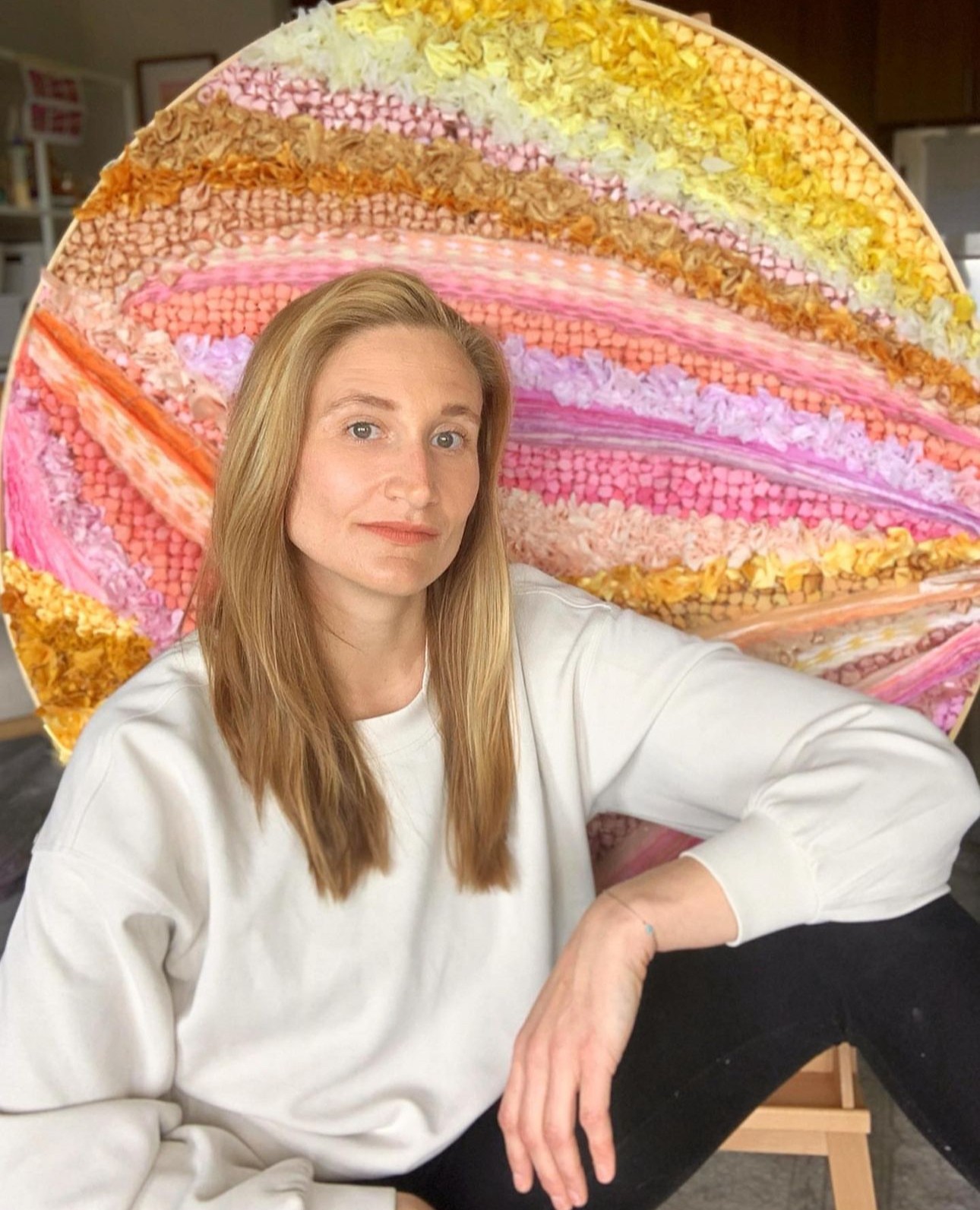Alright – so today we’ve got the honor of introducing you to Lis Sartori. We think you’ll enjoy our conversation, we’ve shared it below.
Lis, appreciate you joining us today. What did your parents do right and how has that impacted you in your life and career?
My parents recognized I had innate artistic abilities from a very young age and they made sure I always had creative outlets.
My mother, in particular, fostered my creativity by providing me with endless craft projects (and a subscription to Martha Stewart Living starting at age ten). There was never a shortage of crayons, markers, paper and pens for me to use, and if I was interested in something she’d find a way to teach me about it. As a child, she’d present me with various materials (often a mix of fabric, sequins, paper towel rolls, scrap paper, glue, tape, etc.) and give me a task, like “create a couch for your Barbie doll,” and I’d happily experiment. She wouldn’t hover or supervise, but she’d check in and show me how to safely use a glue gun, or show me a quick shortcut like how to score paper to make it easier to fold, etc. She taught me to use her sewing machine and I remember the excitement of going to the fabric store to pick out fabric and patterns to create clothes for my American Girl Dolls. I was so proud of the matching vest and bucket hats I made for myself and my doll one summer (it was quite the 90’s look). For every holiday, she’d let me help decorate the house and she’d go a step further by having me help create the decor, whether it was giant spiders for halloween, blowing and decoupaging eggs for Easter, or garlands for the Christmas tree.
As I got older, my parents always encouraged me to take art classes in school. In high school, there were no honors or AP art classes offered at my school, and my mother petitioned the administration to ensure those courses were added. When I got to college, there was a bit of apprehension over the practicality of an art degree. But, they saw and knew that I flourished and was truly at peace when I was “creating.”
I guess, the biggest thing they did right was be supportive of my pursuit of the arts. And it wasn’t blind support. They aren’t the type of parents to say “you’re doing great sweetie” to every single thing I ever did. They were and are incredibly practical and at times critical, so when they give a compliment, you know it’s real. They saw that not only was I innately creative and had artistic talent, but most importantly, they saw that it made me happy.
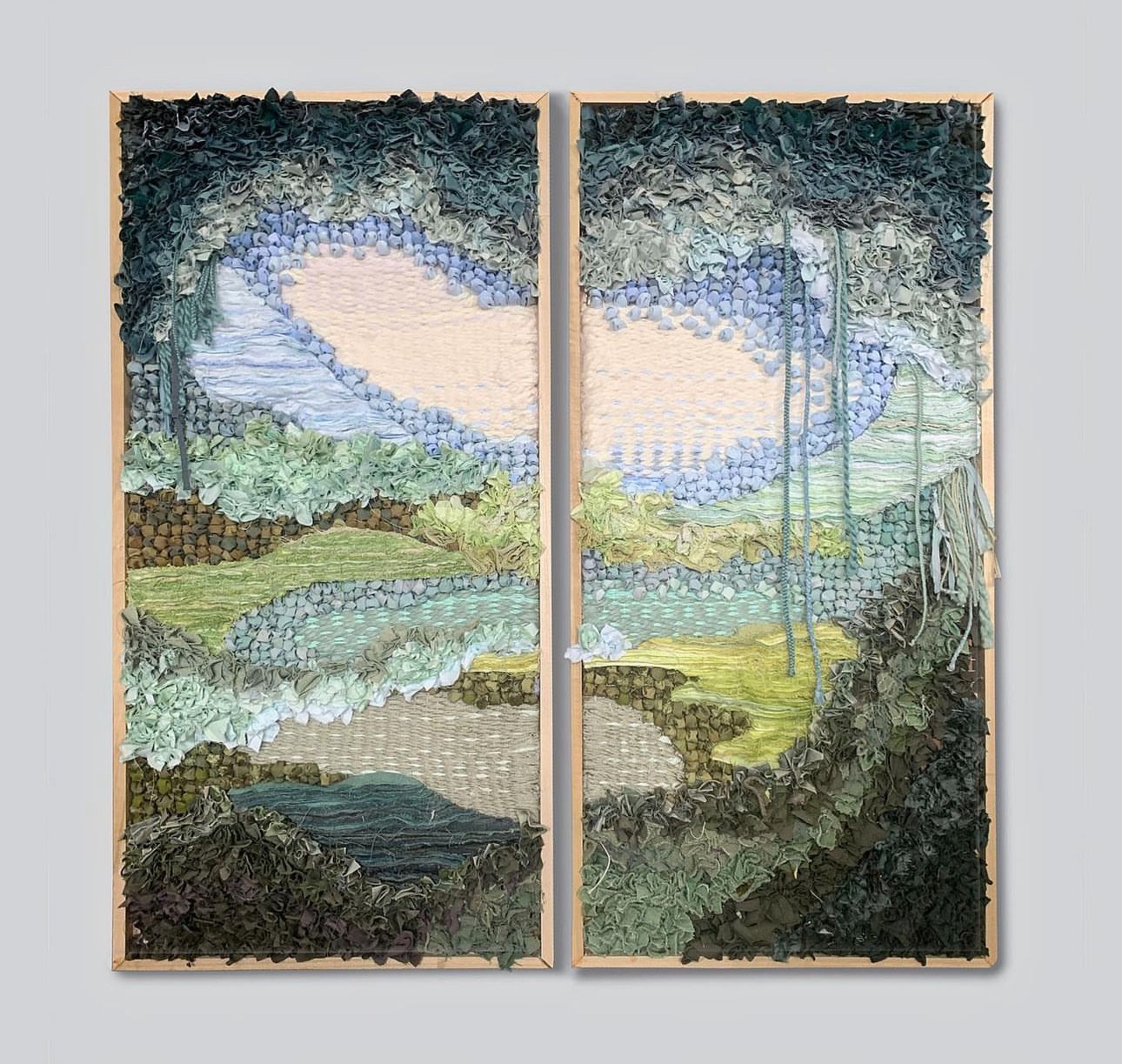
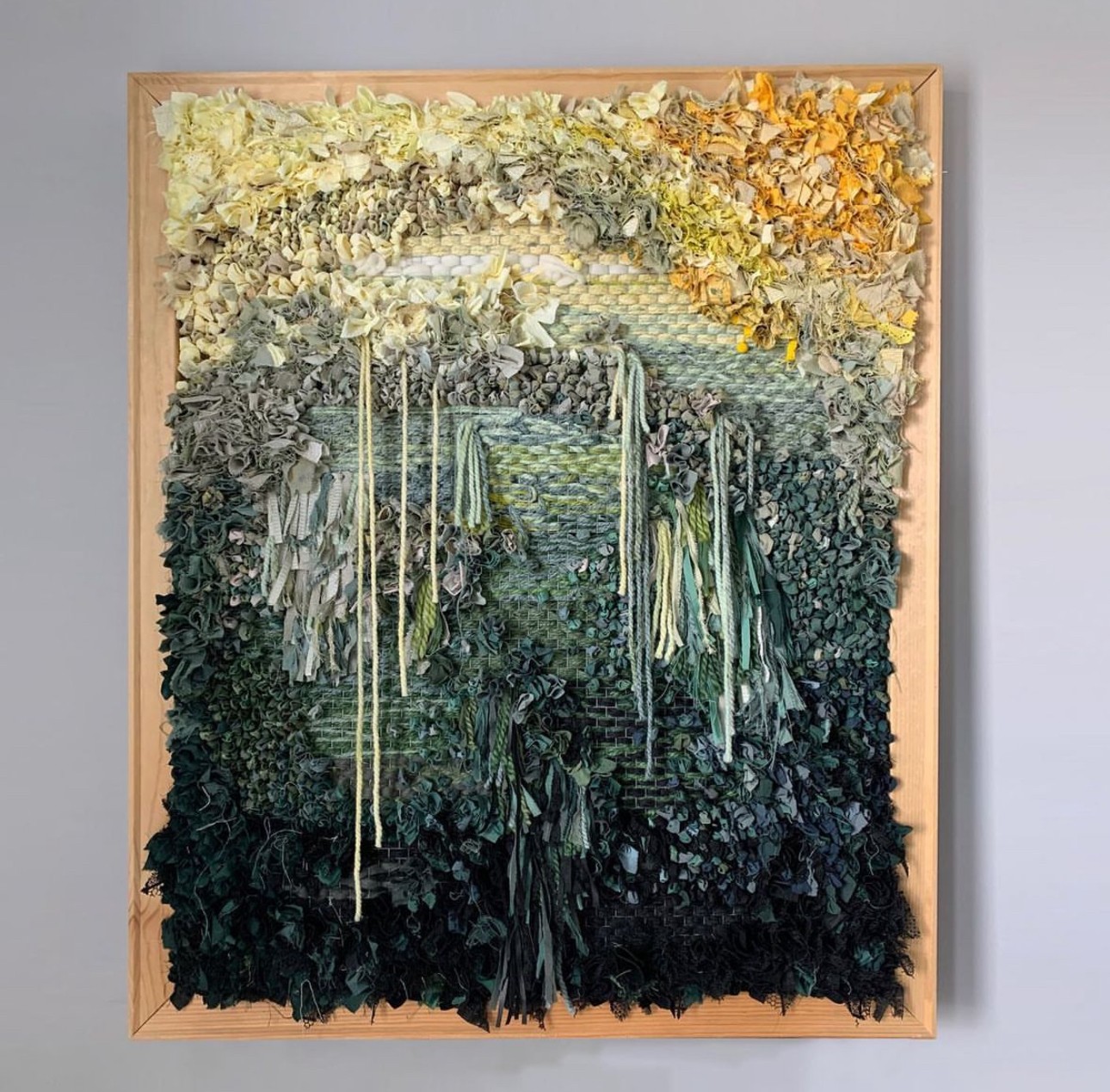
As always, we appreciate you sharing your insights and we’ve got a few more questions for you, but before we get to all of that can you take a minute to introduce yourself and give our readers some of your back background and context?
I am a Fibers Artist living and working in the Boston area. I create large scale, abstract landscapes using recycled materials. I take discarded sheets, curtains, clothes, and whatever fabric I can get my hands on and then dye it and deconstruct it. The fabric is then woven, pushed, pulled and manipulated on a canvas to create very tactile, textural, and lush pieces.
I got my start doing this particular style of work while working as a display artist for a major international retailer. I had been tasked with creating a “living wall,” but I am notorious for killing every plant I come in contact with. I knew it was not practical to even attempt the living wall, as it wouldn’t last the week let alone and entire season. So, I went to work using unconventional materials in my studio to recreate the lush, rich, bold colors and textures of plants using paper, fabric, yarn, string, etc. The result exceeded my expectations and was a huge success. Brand reps and customers alike were incredibly complimentary. From then on, I continued to experiment with this technique in my own personal work and I now create commissions that are part of private collections, restaurants, hotels, and commercial buildings.
My favorite compliment to hear is when people say “I have never seen anything like this before.” It is rare to feel like you are creating something truly unique, and when I started to get this compliment repeatedly, I knew I had to keep going, pushing and experimenting. My pieces have an interesting effect on people, which is so satisfying to watch. People seem to be drawn to the scale, the uniqueness, and the tactile nature (it’s ok to touch!). My pieces also tend to be bright and colorful, which seems to make people smile. Each piece is a portal of sorts. My goal to to take you away, even just for a moment, to a place where you feel a positive emotion. My work makes me happy and brings me an immense amount of peace to create, and in turn, I am so thrilled when I see it spark joy in others.
When working with clients to create a commissioned piece, I start by asking what overall emotion they want to piece to evoke. I then ask if they have any memories of places they have visited that have made them feel that way. We then discuss scale, colors, and if they have any personal materials they’d like me to incorporate into the piece. I then create detailed proposals and work with the client to ensure we have the perfect composition before I get started. My goal is to ensure the entire experience is enjoyable for everyone involved, as art is so magical and special. It should be fun!
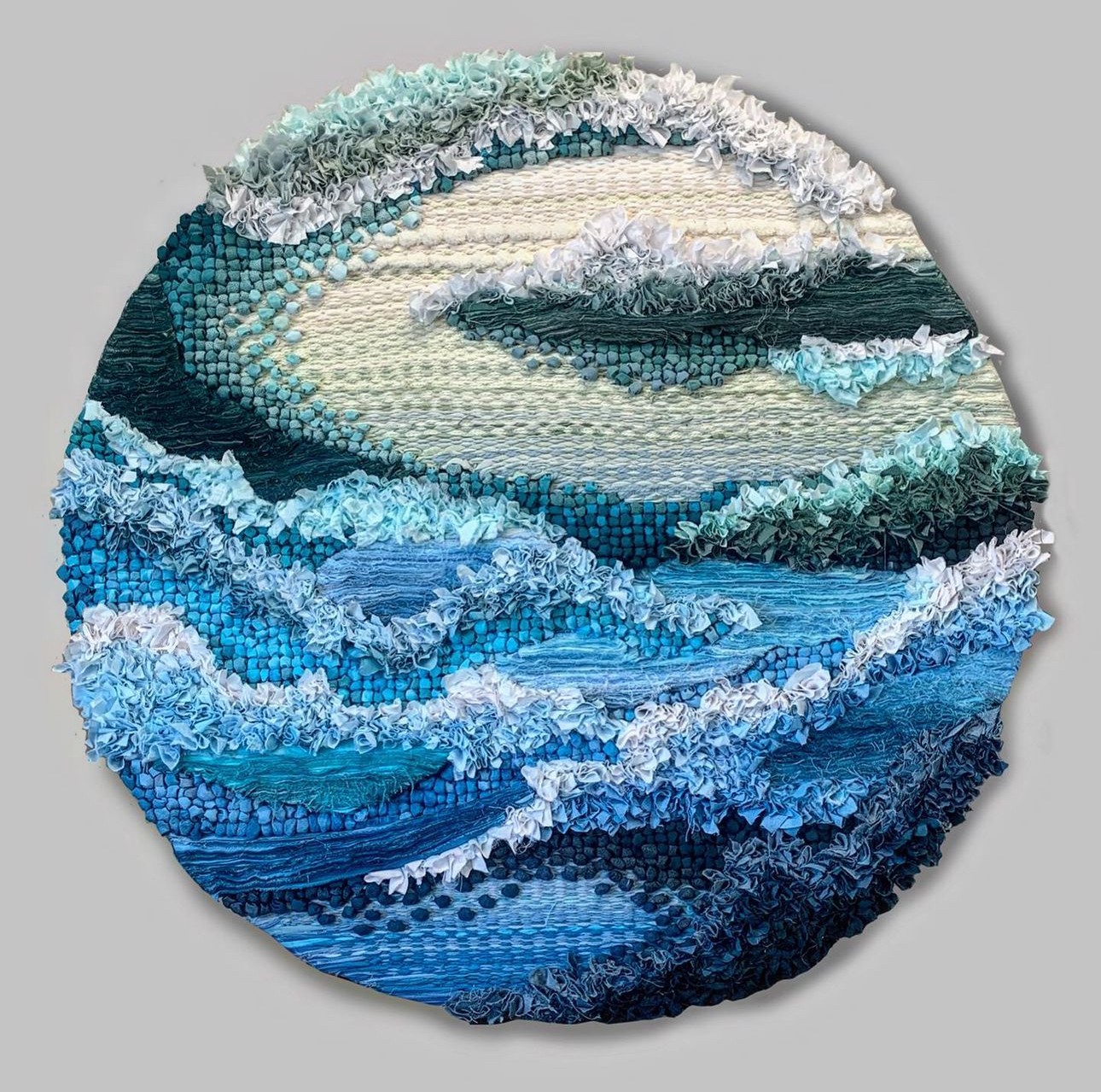

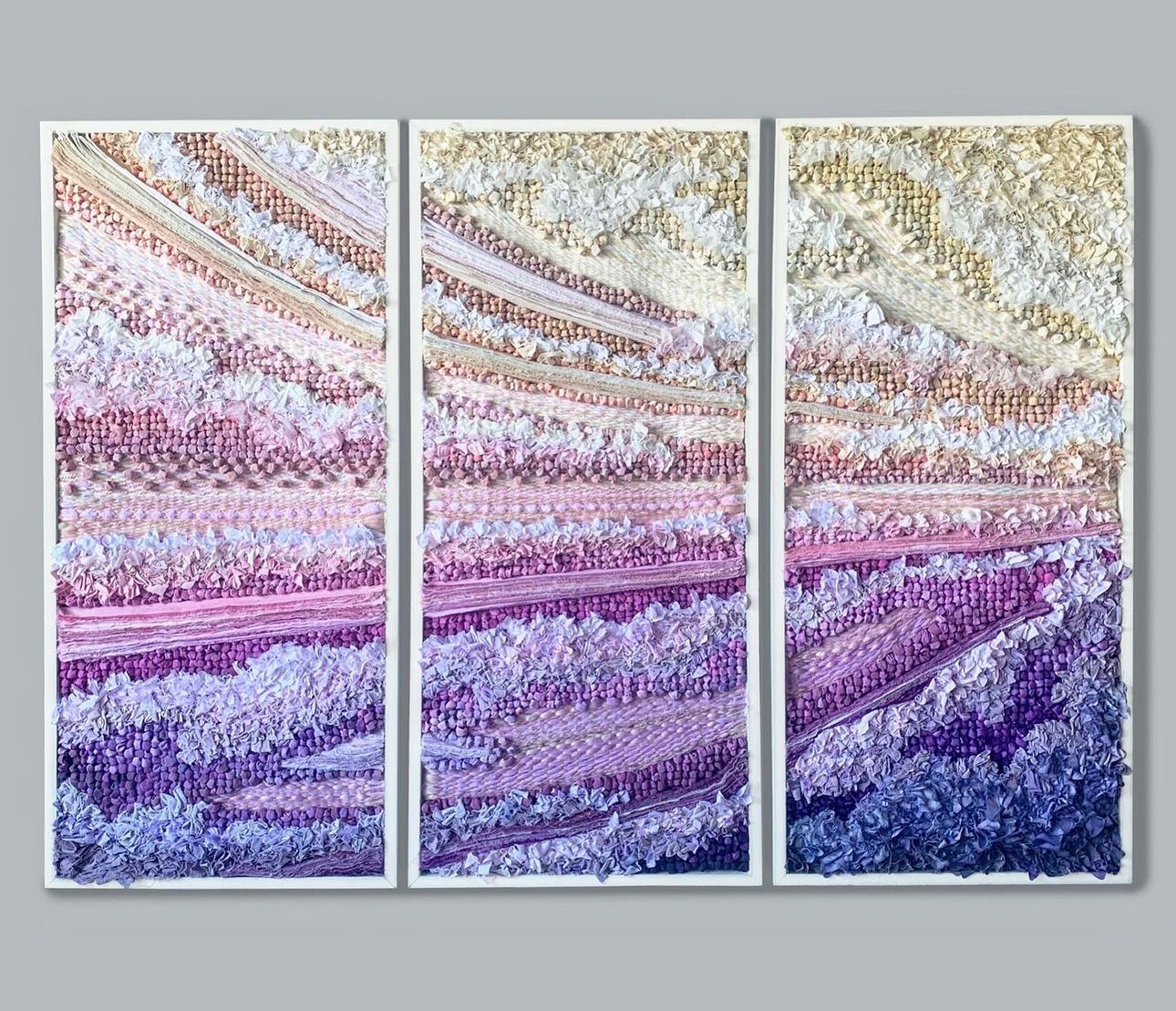
Can you tell us about a time you’ve had to pivot?
I never had the courage to pursue art as a full time career. and I am not sure I ever would have had it not been for the pandemic. Let’s be honest, life is expensive and in order to survive, most creatives need to have another source of income while they’re getting started. I had worked as an event planner for many years, which was a great creative outlet for me. I would try to create my own work in my free time but there often just wasn’t enough time to do anything meaningful. When the Covid 19 lockdowns began, I was laid off from my job. In normal circumstances, I would have panicked and applied to comparable roles and spent all my time and energy seeking a new job. The pandemic provided me with a unique opportunity, as there were no jobs to seek. Rather than spinning my wheels searching for my next job, I accepted that I’d be unemployed for a bit and used the time, as many did, to pursue my own personal interests. I created more and more of my own work. I posted it on social media and gained quite a bit of unexpected traction. Sales started rolling in, and as time went on, I started to realize this was a more and more realistic avenue for income than I expected. As restrictions began to be lifted, I had seen enough success to believe I could do this. I knew sacrifices would have to be made, but I’d never been happier and more at peace. As I get older, I realize more and more everyday that my definition of success is more about living a fulfilling life than anything else.
Looking back, are there any resources you wish you knew about earlier in your creative journey?
Social media is your friend. It is not frivolous or a waste time. It is the best way for potential clients to see who you really are and what you offer. Having a website isn’t enough anymore, and let’s be real, some people view an Instagram account as more legitimate than a website that hasn’t been updated in years. We live in an age where people want to connect and by engaging with you on social media, you inevitably develop relationships, which grows your reach. But, do not underestimate how much work it is! I used to think “influencers” had the easiest job in the world until I started creating content to promote my artwork. Wow, was I wrong! It’s a hard habit to break, but start capturing every part of your process. It helps to have that footage and imagery on had so you can pull it together into meaningful content.
Contact Info:
- Website: www.lissartori.com
- Instagram: @lis.sartori


